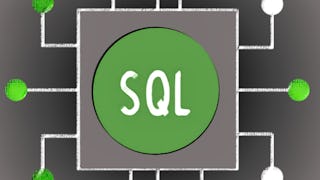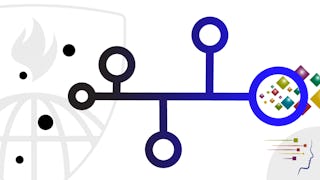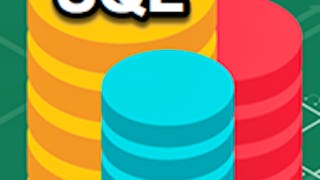Most real-world data isn’t clean, it’s messy, incomplete, and spread across sources like websites, APIs, and databases. In this course, you’ll learn how to collect that data, clean it, and prepare it for analysis using Python and SQL.
通过 Coursera Plus 解锁访问 10,000 多门课程。开始 7 天免费试用。


Data I/O and Preprocessing with Python and SQL
本课程是 DeepLearning.AI Data Analytics 专业证书 的一部分

位教师:Sean Barnes
顶尖授课教师
4,260 人已注册
您将学到什么
You’ll work with real-world data as it exists in practice: messy, unstructured, and spread across sources.
You’ll learn to extract data from websites, APIs, and databases, and clean it using both Python and SQL, an essential step in any analysis pipeline.
您将获得的技能
要了解的详细信息

添加到您的领英档案
16 项作业
了解顶级公司的员工如何掌握热门技能

积累 Data Analysis 领域的专业知识
- 向行业专家学习新概念
- 获得对主题或工具的基础理解
- 通过实践项目培养工作相关技能
- 通过 DeepLearning.AI 获得可共享的职业证书

该课程共有4个模块
This module introduces techniques for acquiring data from a wide range of sources, with a focus on web scraping and text processing. You'll begin by exploring how data flows into analysis pipelines and gain hands-on experience using tools like Pandas and Beautiful Soup to extract, clean, and structure data. You'll apply text preprocessing methods to handle missing values and parse HTML. Plus, you’ll consider the ethical implications of scraping data from the web.
涵盖的内容
22个视频3篇阅读材料4个作业1个编程作业3个非评分实验室
This module focuses on acquiring data using APIs, as well as applying numerical cleaning techniques. You’ll learn how to retrieve data from web-based APIs, handle authentication securely, and transform raw JSON responses into usable dataframes. The module also covers techniques for cleaning and preparing numerical data, including scaling, binning, normalization, and outlier handling.
涵盖的内容
17个视频2篇阅读材料4个作业1个编程作业3个非评分实验室
This module introduces the fundamentals of data storage and retrieval using databases and SQL. You’ll learn how data is structured in relational systems; explore core concepts like entities, relationships, and schemas; and gain hands-on experience writing SQL queries. You’ll also explore how to query databases from a Python notebook, as well as how generative AI tools can support SQL-based tasks.
涵盖的内容
15个视频3篇阅读材料4个作业1个编程作业2个非评分实验室
In this module, you’ll expand your SQL skills into data preprocessing, validation, and joins (combining tables). You’ll learn how to use SQL for filtering, conditional logic, and handling missing values, and apply validation techniques using aggregation and grouping. The module also explores different types of joins and demonstrates how to use them to combine and analyze data across multiple tables—especially in real-world scenarios like analyzing sports performance data.
涵盖的内容
17个视频11篇阅读材料4个作业2个编程作业4个非评分实验室
获得职业证书
将此证书添加到您的 LinkedIn 个人资料、简历或履历中。在社交媒体和绩效考核中分享。
位教师

从 Data Analysis 浏览更多内容
 状态:免费试用
状态:免费试用Duke University
 状态:免费试用
状态:免费试用 状态:免费试用
状态:免费试用Johns Hopkins University
人们为什么选择 Coursera 来帮助自己实现职业发展




学生评论
11 条评论
- 5 stars
100%
- 4 stars
0%
- 3 stars
0%
- 2 stars
0%
- 1 star
0%
显示 3/11 个
已于 Oct 22, 2025审阅
Sean Barnes is a great teacher and his courses are terrific. How I wish his courses were available when I first decided to learn data science!
已于 Jun 27, 2025审阅
Very broad and thorough course on data collection techniques, preprocessing, analysis, and visualization. Highly recommend.
已于 Jun 20, 2025审阅
very precise. touches all relevant concepts with perfect examples. Good datasets and great evaluation.
常见问题
To access the course materials, assignments and to earn a Certificate, you will need to purchase the Certificate experience when you enroll in a course. You can try a Free Trial instead, or apply for Financial Aid. The course may offer 'Full Course, No Certificate' instead. This option lets you see all course materials, submit required assessments, and get a final grade. This also means that you will not be able to purchase a Certificate experience.
When you enroll in the course, you get access to all of the courses in the Certificate, and you earn a certificate when you complete the work. Your electronic Certificate will be added to your Accomplishments page - from there, you can print your Certificate or add it to your LinkedIn profile.
更多问题
提供助学金,

